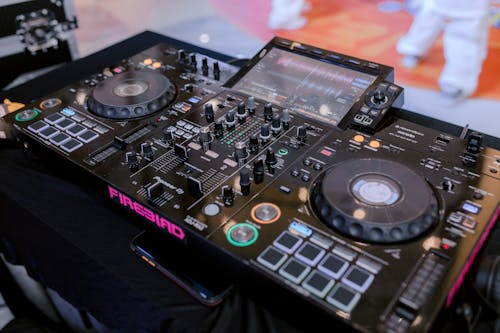The Evolution of Music Production Software: Trends and Innovations
The journey of music production software has been one of rapid evolution, reflecting technological advancements and changing artistry. This article explores the latest trends shaping the industry, including automation, AI integration, and enhanced collaboration features. As producers embrace these innovations, the software is becoming more user-friendly and versatile, allowing for more intricate and creative outputs. Join us to understand how these trends are revolutionizing music production, enabling both amateurs and professionals to produce world-class tracks with ease.
The Historical Context of Music Production Software
Music production software has evolved dramatically since the advent of digital audio technology. Initially, music creation processes relied heavily on analog equipment, making them complex and often inaccessible to many aspiring artists. With the introduction of digital audio workstations (DAWs), the landscape began to change, democratizing music production. Early DAWs enabled users to record, edit, and mix music on their computers, providing a platform that bridged the gap between creativity and technology. As music production software advanced, it introduced features that mimicked traditional recording studios while also providing unique digital capabilities. This shift not only transformed the production workflow but also enabled a new generation of musicians to experiment with their sounds and express their artistry without the limitations of physical equipment.
Current Trends in Music Production Software
Today, music production software reflects a rich tapestry of trends driven by technological advancements and user demands. One notable trend is the increased integration of artificial intelligence into music software, which assists users in crafting melodies and harmonies or even generating unique soundscapes. Additionally, automation features have gained traction, allowing producers to create intricate arrangements with minimal manual intervention. Moreover, as the demand for remote collaboration grows, music production software is evolving to include cloud capabilities that enable multiple users to work on projects in real-time. These trends illustrate how the industry continues to adapt to both technological possibilities and shifts in artistic practices, providing tools that enhance creativity and collaboration.
,
The Impact of AI on Music Production Software
Artificial intelligence is reshaping the landscape of music production, offering revolutionary tools that streamline creative processes. Music production software leveraging AI can analyze existing tracks and recommend adjustments or improvements, enhancing user productivity. By automating certain tasks, producers can focus on the creative aspects of their work, allowing for a more intuitive approach to music creation. Furthermore, AI-driven plugins are now capable of generating unique sounds or arrangements, providing users with a limitless source of inspiration. As these technologies continue to improve, music production software will foster a more collaborative and innovative creative environment, further democratizing access to professional-grade production tools.
The Role of Collaboration in Music Production Software
Collaboration has increasingly become a central theme within modern music production software. The rise of online platforms allows musicians from different backgrounds and locations to come together seamlessly. Features enabling real-time collaboration make it easier than ever for producers to share ideas, exchange feedback, and refine their projects collectively. This synergy between artists leads to more enriched musical outputs, as diverse influences converge to shape the final product. As music production software continues to adapt to these collaborative needs, users can expect increasingly sophisticated features that facilitate creativity across distances, fostering a global musical community.
Future Innovations in Music Production Software
Looking forward, the potential innovations in music production software are both exciting and vast. As technology advances, integration with virtual and augmented reality experiences might create immersive environments for music creation and performance. Additionally, advancements in machine learning could result in software that learns a user’s preferences and adapts over time, streamlining the production process further. These possibilities highlight the continuous evolution of music production software as tools become increasingly sophisticated and user-centric. Embracing these innovations will be key for producers looking to stay at the forefront of the music industry.
Conclusion: Embracing Change in Music Production Software
In conclusion, the evolution of music production software is a testament to the power of technology in shaping artistic expression. By keeping pace with trends and innovations, producers can harness the full spectrum of possibilities these tools offer. Understanding the evolution and current landscape of music production software not only enhances the creative journey but also positions artists to navigate future changes effectively. Thus, making informed choices about software will play a critical role in how musicians craft their sonic identities in an ever-evolving industry.
